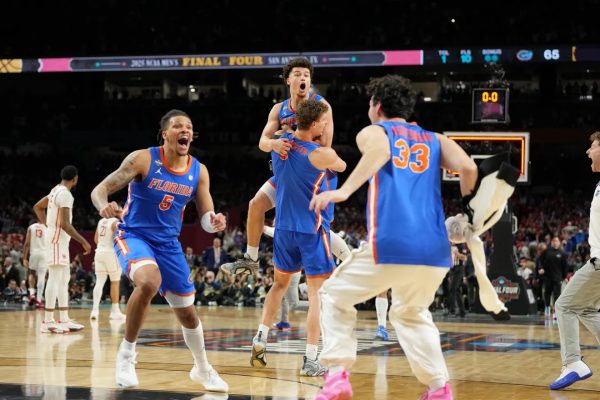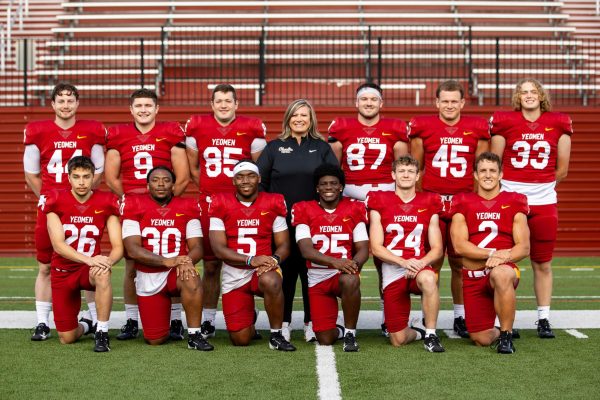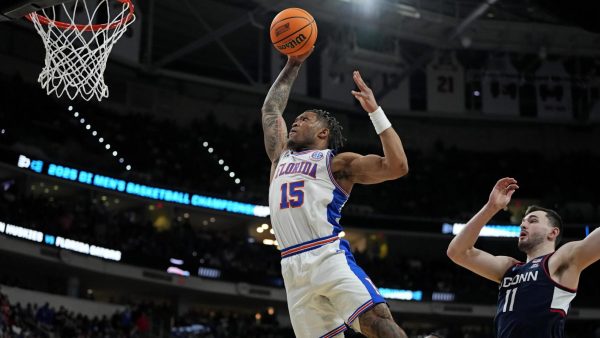Marketing the Athletic Experience Increases Donor Relations
Over fall break, I was visiting a friend at Stanford University during their homecoming weekend. I saw droves of students and alumni flooding the campus with their Stanford Tree paraphernalia.
This showout, however, didn’t compare to the scene I saw during the University of Michigan’s homecoming weekend, where the streets were lined with students and alumni covered head-to-toe in maize and blue. I saw enthusiasm and fellowship shared by so many people.
Although my amazement at the sheer number of people present at each event may have simply been a result of the size difference between those schools and Oberlin — after all, each of those campuses do include graduate schools — I began to wonder, how much of an impact do college athletics have on the alumni presence at that university?
As I pondered this question in the context of my own college experience, I wondered about the effect that the performance of athletic programs has on alumni donation patterns as well. According to a 2008 Economics of Education Review article titled “The impact of athletic performance on alumni giving: An analysis of microdata,” written by Jonathan Meer and Harvey S. Rosen, athletic performance does indeed have an effect on alumni donation patterns.
This study, unlike others on the subject, uses alumni donation data to estimate the effects of specific aspects of their college experiences on their giving habits. This strategy differs from other studies’ use of aggregated institutional data to analyze the impact of athletic program (generally basketball and football) performance on general donation patterns.
In addition to giving patterns, Meer and Rosen collected data on athletic participation, undergraduate conference competition victories, and conference competition victories during alumni years, as well as information on binary gender categories, SAT scores, academic honors, ethnicity, type of high school, summary evaluations made by the institution’s admissions office during the application process, and grade point average.
They found that participation on athletic teams, as well as team success, did impact donation patterns of former athletes to both athletic and general purpose funds. The study used male and female categories and found that athletic participation significantly increased for male donors at a 5% threshold, but it did not significantly affect the giving patterns of women. Interestingly, the basketball team’s performance specifically increased the donations of both men and women to athletic programs.
One of the study’s shortcomings is that it pulls microdata from a single research-based university, so these patterns could vary across different types and sizes of institutions and athletic programs.
However, the results still highlight an interesting pattern of alumni participation and raise questions about how participating in athletic programs helps bring in alumni money. In my mind, the answer comes down to camaraderie and brand loyalty. Athletes work to defend the pride (and athletic record) of their team and school.
Athletes also end up spending a lot of time developing relationships within their team as well as with competitors. Logically, the inner network formed within the larger network of the school would continue post-graduation as athletes continue to contribute to the school’s brand. For schools with large athletic programs, like Stanford or Michigan, this camaraderie and loyalty appear to be dominant forces that draw alumni back to campus.
Understanding this information in the context of my own education is difficult for two reasons: The study was done using data from a single university’s development office, and Oberlin’s culture is not centered around athletics. I believe this is an important aspect of Oberlin’s culture that I am not looking to change. In fact, I believe that a lot of Oberlin’s values are centered around going out and imparting into the world, not remaining insular to the institution. I see alumni across the globe that defend those values by living them.
As I approach my own graduation, I wonder if my peers and I will feel called back to campus, whether to spectate events or to fund programming, or if our defense and pride in our school’s values will push us further and further into the world. I think it is also important to consider what brings us together as students and alumni from the same campus as we continue to shape and reshape the experience and culture of this college.







